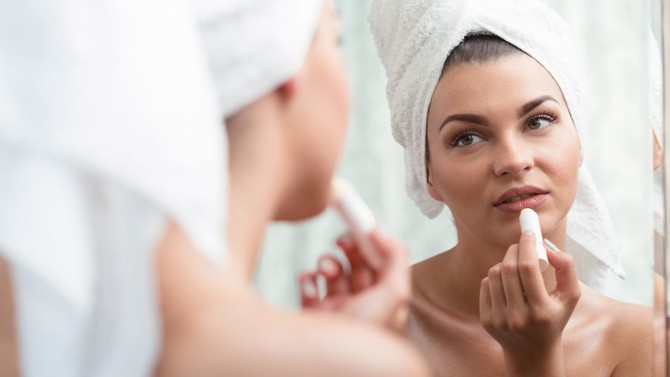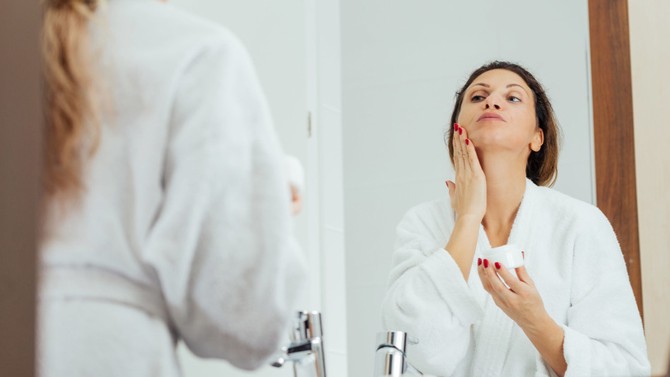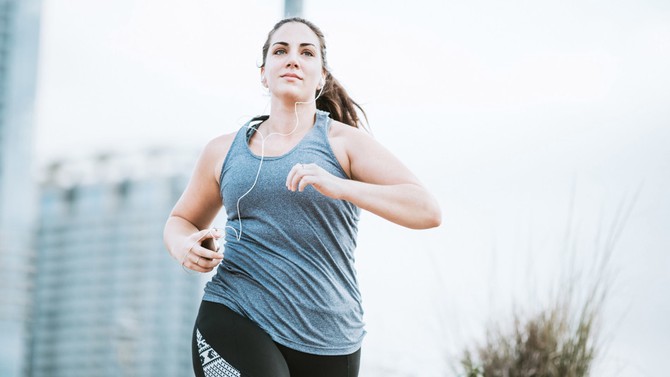What Dermatologists Know About Wrinkles That You Don't
We asked the pros for the best advice for youthful-looking skin that they give to their patients—and also follow themselves.
By Jessica Migala

Photo: KatarzynaBialasiewicz/istock
If you're going to tackle one area...
"Line-free lips are a sign of youth, beauty and sexuality," says Marina Peredo, MD, a board-certified dermatologist and an associate clinical professor of dermatology at Mount Sinai Hospital in New York. "When lips age, they get thinner and develop wrinkles, which, in some cases can become very visible," she says. Because people tend to focus on someone's mouth as he or she talks, the lines on and around lips tend to age us the most. That's why Peredo recommends patients tackle wrinkles here when they want to make the biggest impact. An OTC lip treatment with anti-agers like peptides may bolster collagen production and help smooth out these lines over time, while lip moisturizers with hyaluronic acid may provide a temporary plump.

Photo: TomasSereda/istock
It's not just the sun you need to watch out for
Pollution is another culprit in aging, says Peredo. In fact, a 2016 study from German researchers looked at the impact of traffic-related air pollution on skin quality. This type of pollution spews nitrogen dioxide into the air, exposure to which was associated with a greater number of wrinkles on the cheeks of women, particularly women older than 50, the researchers found. Peredo recommends patients use sunscreens that are formulated with antioxidants that act like a shield against air pollution, such as Alastin's HydraTint Pro Mineral Broad Spectrum Sunscreen SPF 36, which contains free-radical scavengers like algae and tea extracts. Eating foods rich in antioxidants, such as berries, leafy greens and tomatoes, is also important for blocking the free radicals from pollution and UV rays that can lead to wrinkles.

Photo: izusek/istock
A shot now could help later
There are two types of lines on the face: dynamic (which are created when you move muscles making facial expressions); and, static (which are visible all the time), says Quenby Erickson, a doctor of osteopathic medicine at Erickson Cosmetic Dermatology in Chicago, who is also a fellow of the American College of Mohs Surgery and the American Academy of Dermatology. While dynamic lines are normal (you move your face!), repeated movements can break down collagen and etch them in over time, making them permanent, static lines. If you can catch them while they're still developing and not yet permanent, by using Botox or Dysport early on, you'll need fewer treatments of it as you age. Plus, research in JAMA Facial Plastic Surgery suggests that Botox injections can also improve skin collagen, thereby enhancing the skin’s appearance and providing more long-term results.
Erickson advises her patients to use Botox or Dysport in the frown muscles between the brows. "This can completely prevent those lines from forming and keep people looking more relaxed and approachable." If you're thinking of trying a treatment, there's no golden rule for when to start, she says, but you may consider your first injection as early as in your 20s, if you're noticing the start of lines. Of course, it's never too late, either. Addressing fine lines is easier than addressing lines that have become deeper wrinkles, because you'll generally need less Botox less often to maintain your results. So if you don't give those wrinkles a chance to form, it will take less work to try to correct them.

Photo: Drazen_/istock
Topical treatments can go a long way
The dermatologists agree that what matters most in any anti-wrinkle routine is what's slathered on your skin every day. Among all of the skin-care products, three stand out. The first is, you guessed it, sunscreen, which Erickson applies daily to her face and neck (go for a broad-spectrum formula with at least an SPF 30 to help prevent UV rays from degrading collagen and elastin fibers). The next is a retinol or tretinoin cream (the vitamin A derivative revs collagen production) to apply at night. And the third is a moisturizer or serum to apply day and night that contains antioxidants (to safeguard cells from damage). "These products help my skin look its best and prevent the aging process," Erickson says.

Photo: RyanJLane/istock
Don't forget about your genes
As much as you may try to prevent wrinkles, there's only so much you have control over. "The likelihood of the type of wrinkles you'll develop and the age of onset is influenced by genetics," says Peredo. Your ethnicity and skin tone can make you more vulnerable to the damaging effects of UV rays, for instance. So, while you can't stop every line and crease, factoring in your genetics can help you determine the extent of the anti-wrinkle lifestyle measures you'll want to take, whether that includes being adamant about wearing SPF (and reapplying), maintaining a healthy weight, exercising regularly and/or avoiding consuming excess sugar (which has been shown to form what's called advanced glycation endproducts—or AGEs, for short—that can degrade collagen and elastin and lead to what‘s known as "sugar sag."
Published 08/02/2017
As a reminder, always consult your doctor for medical advice and treatment before starting any program.

